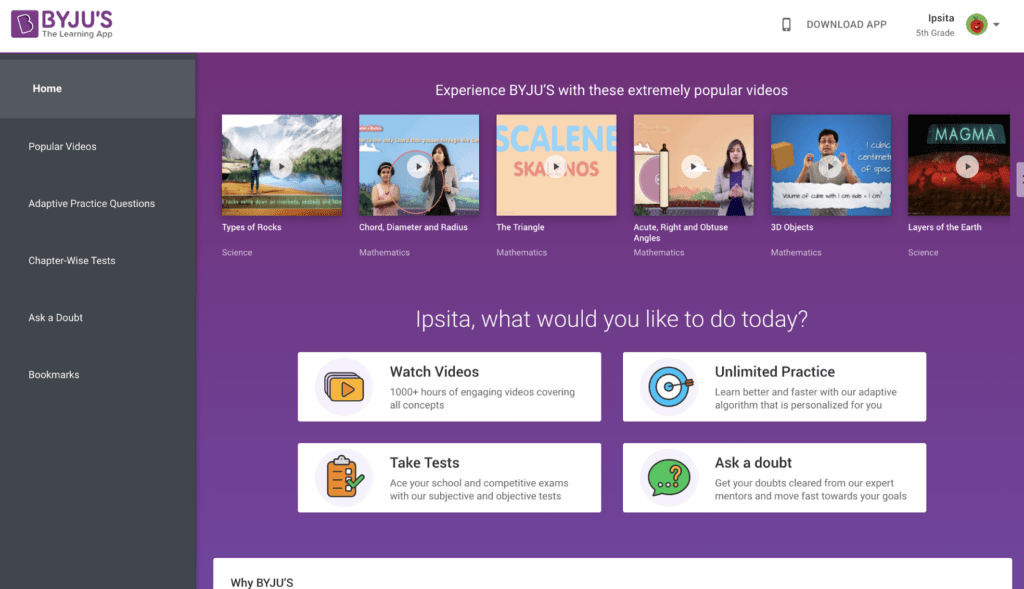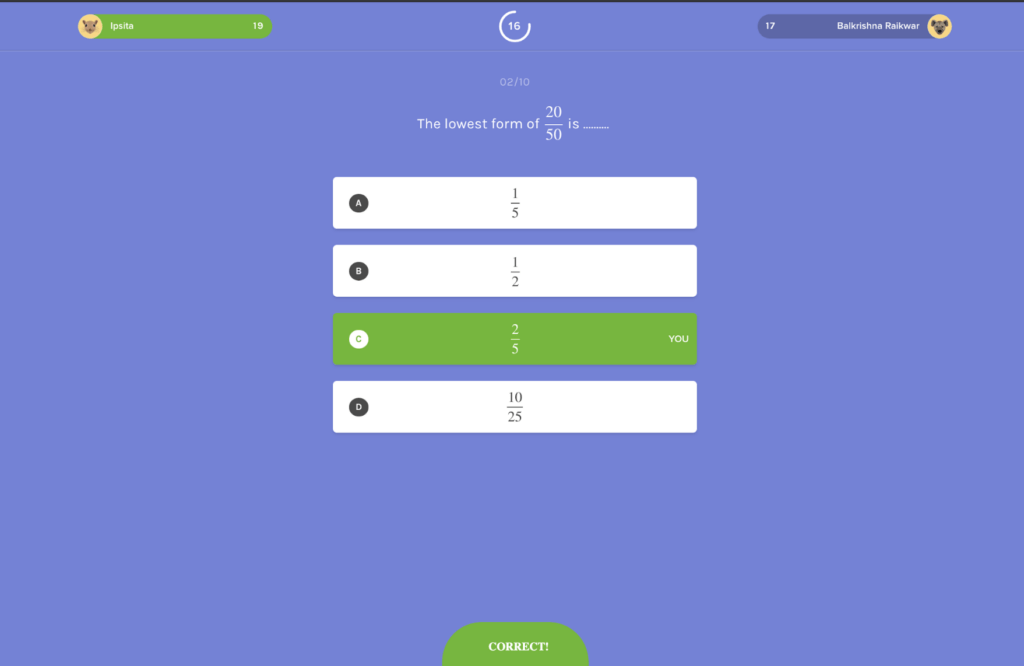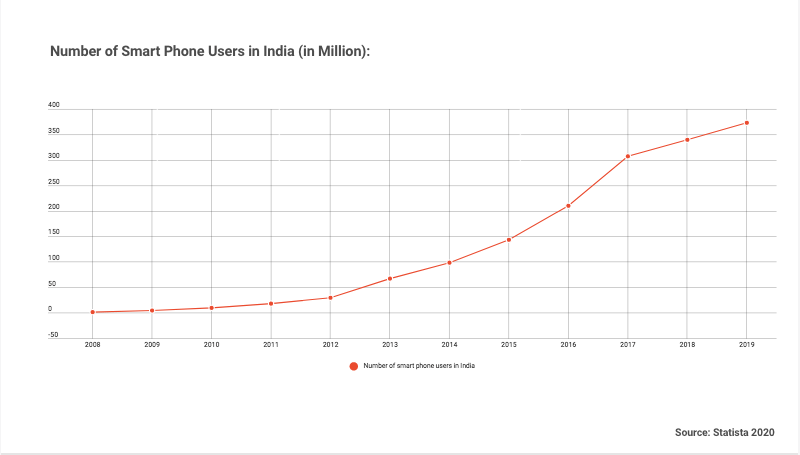Imagine learning a course from top teachers a continent away, from the comfort of sitting at your home.Today, the Internet has brought about a revolution across different sectors, from ordering food to booking a cab. Everything is going online. So is education.
As of now, the teaching-learning process in India is aligned towards the brick and mortar classroom model. With the rapid growth of the Internet and technology in the past few decades, significant changes are being brought about in the Indian education system. The journey of education in India has been marked by numerous milestones, with e-learning being the most recent.
For example, the Indian Union Budget 2020 presented by the country’s Minister of Finance, Nirmala Sitharaman delivers a host of initiatives to boost the growth of the technology sector. Most prominent of these was the introduction of a degree-level full-fledged online higher education program to be offered by the country’s top 100 educational institutions to underprivileged students.
You May Also Like: The Education Budget 2020: More Money, Less Policy Execution?
This is just one example amongst many. The expansion in the smartphone sector and the rise in internet usage along with government plans like ‘Digital India’ have encouraged and enabled the growth of e-learning in India. There continue to be indications that we are on the threshold of witnessing a transformed education system. Yet it is important to ask amidst all of this: just how well can e-learning substitute the well-established brick and mortar school in a country like India?
The Five Parameters of Effective Learning
Can you recall a course in college that made an enduring impact on you? Do you remember what was so unique about it? Was it because the material was engaging or was it because your teacher taught really well? There are always certain elements of an education that make any learning experience enjoyable and highly effective. To understand the value of e-learning, we need to mark the pedagogy against these five elements of learning in a traditional classroom. What are they?

Firstly, a learner-centric positive environment, which truly puts students at the centre of a classroom, is pivotal for an effective learning process. Students learn relevant content through innovative methodologies that let them freely explore their creative imagination, express thoughts, ask questions, help them set clear learning goals, and provide opportunities to build life skills and confidence.
Secondly, collaborative team learning is another important factor for effective learning, as it builds values of teamwork, collaboration, and ownership, making the learning process much faster. Learning together by leveraging each other’s strengths is the best and most effective way of learning.
Thirdly, opportunities to apply learning is a crucial factor for effective learning, as making text-to-world connections are extremely important. Providing ample opportunities for learners to apply their learning in real life makes it relevant and practical.
Fourthly, evaluation and acknowledgment are an important part of the learning process. Evaluating the effectiveness of learning at regular intervals is important when making necessary pedagogical improvements to get the best possible learning outcomes. ‘Positive behaviour narration’ or acknowledgment followed by rewards is extremely crucial in a classroom setting to maintain the constant motivation to learn.
Lastly, feedback and reinforcement are extremely important for effective learning. In a classroom environment, the teacher may ask questions and initiate discussions or interactions to reinforce learning. Constant feedback for both teachers and students is required to make improvements in pedagogy and syllabi.
How Is E-learning Meeting These Essential Parameters?
E-learning plays a crucial role when it comes to providing student centric learning in a positive environment. E-learning platforms provide learners with interactive courses with user-friendly and easily accessible materials for personalized learning, according to learning levels, needs, and aspirations. This differentiation is generally quite difficult to implement in regular classrooms where one teacher has to address the different learning levels and needs of students.
You May Also Like: Why Your Teacher Needs To Be Trained Better
When it comes to collaborative team learning, nothing compares to learning with peers in a traditional classroom setting. E-learning is being made more interactive with e-labs, interaction centres, and resource centres where students can work collaboratively in groups using instant messaging tools, online Q&As, and discussions. However, while collaborative tools to foster students’ critical thinking, problem-solving, and analytical skills have been in demand, they are rarely implemented on these platforms. Although Ed-tech giants like Byju’s, Unacademy, Vedantu, and Toppr have made learning personalised, none of these platforms have developed a system for collaboration and teamwork in the learning process to match the effectiveness of a classroom set up.

Speaking of opportunities to apply learning, students engage more deeply when they connect classroom learning to the real world. The internet has a big role to play here. YouTube videos, live streaming, podcasts, and news feeds make it easier to bring the content to life. Online learning platforms also make their content relatable with real-life connections. The most well-known e-learning platform in India, Byju’s, offers courses with practical connections that are easy to understand. For example, instead of just using diagrams or text, the “Knowing Types of Plants” module for 6th graders actually uses real plants to explain the concepts well and in a relatable manner. These lessons also take place out on the field, giving students a sense of the environments connected to the material they’re studying. These are the advantages of pre-planned and pre-recorded lessons on an ed-tech platform.
However, this ‘real-life’ is experienced on a computer screen, after all, leaving students with no scope of experiential learning, for which there is greater scope in the classroom. Learning from field visits, the ‘real’ alternative here, also allows students to apply their learning by taking up various team projects and seeking teachers’ guidance.
Evaluation of the e-learning courses is done through assessments that help to consolidate learning and strengthen recall skills. Keeping track of all tests and results online is easier than keeping track of pen and paper examinations in schools, making the learning curve much sharper for students. Most platforms constantly check growth through short and effective assessments and provide accurate data for each course. E-learning courses also have performance-based learning objectives, with a robust set of summative assessments to measure the same. Some platforms like Toppr take assessments in the form of games, making the process engaging, while also helping students make their own subject tests and prepare for other competitive exams.

Offering rewards is a form of acknowledgment that results in positive outcomes, both for traditional classrooms and online platforms. For example, Byju’s provides attractive stickers and badges as rewards for their early learners on completing each learning milestone. Toppr uses achievement levels to keep students motivated and enhance growth. So, online evaluation and reward systems prove to be more attractive and efficient than regular classroom systems, where teachers may be stretched for time and resources to effectively implement the same.
You May Also Like: The Telangana SCERT Curriculum Framework: Rigorous or Unrealistic?
Finally, feedback in e-learning courses is extremely important as it helps in quick reinforcement of a specific learning point. It can be given through various tools and facilitation techniques and helps build skills and knowledge after assessments, while also helping to improve the quality of online content. When compared to often stagnating teaching methods or syllabi, this is a boon. Yet, when it comes to the reinforcement of a concept, the ability to do so is easier in a classroom where it can be directly taught by a teacher using different teaching methodologies to ensure full comprehension. Replaying a module may not have the same effect.
So, What Becomes Of Traditional Classroom Learning?
In a digitally disposed world driven by apps and microlearning concepts, it is clear that e-learning meets most of the parameters for effective learning. Yet, a question arises as a result: is it good enough to replace current classroom learning techniques in the near future?
While the conventional model is the commonly accepted mode of formal education across the world, the education sector is opening up to online education. As per a recent report released by KPMG India and Google, the market for online education in India is expected to witness a massive growth of eight times in the next three years. With competitive exams and test preparation being the fastest-growing segments, the e-learning industry is expected to grow rapidly. However, although e-learning is gradually becoming an education equalizer, as seen above, it is far from replacing peer interaction or face-to-face instruction.

In spite of the government’s efforts to create and improve digital infrastructure across the country, strong enough progress to actually accommodate e-learning for all is far off. India is home to 451 million Internet users as of 2019, making it the second-largest userbase in the world after China. Yet, given our population, this only means 36% Internet penetration across the country. Accessing the Internet is still a privilege for many, and with more than half of India’s population still offline, this makes e-learning accessible to only a certain economic group of society.
While the onset of ed-tech startups in India has allowed millions to learn in a completely new way, for learning in India to digitally progress as a whole, teachers, students, ed-tech startups, parents, and government officials will need to join hands for building an ecosystem to address the e-learning gaps we currently face. While e-learning shouldn’t look to replace classroom learning, it’s the right time to use both to bridge each other’s gaps.







[…] The usage of technology to tide this period over has its own implications too, mainly that the e-learning infrastructure in India is simply not strong enough to ensure effective learning for all. As a […]
[…] You May Also Like: How Well Can E-Learning Match Up To A Traditional Classroom? […]
[…] The usage of technology to tide this period over has its own implications too, mainly that the e-learning infrastructure in India is simply not strong enough to ensure effective learning for all. As a […]
[…] You May Also Like: How Well Can E-Learning Match Up To A Traditional Classroom? […]
2020 is the best place to get fast updates of the most recent Sarkari 2020. For forthcoming enrollment warnings that are accessible on sarkariresult-update,Get Sarkari Naukri latest & upcoming jobs news from Government Jobs Vacancy, Public Sector Jobs, Central Govt,Sarkari Naukri update latest job news for govt sector companies. Central Sarkari Exam 2020 State Vacancies including Railway Jobs, UPSC, SSC, PSC, banking, and so forth. sarkariexam 2020
sarkari result
Get Sarkari Naukri latest & upcoming jobs news from Government Jobs Vacancy, Public Sector Jobs, Central Govt,Sarkari Naukri update latest job news for govt sector companies
Sarkari Naukri, Freshersworld, Sarkari exam, Rojgar Result are for the most part accessible in Job ready page and get notified of all Central Sarkari Exam 2020 State Vacancies including Railway Jobs, UPSC, SSC, PSC, banking, and so forth. sarkariexam 2020
sarkari result
Very well analysed. Probably a blended model is the answer- a model that balances the offline and online delivery, to secure the learning outcomes